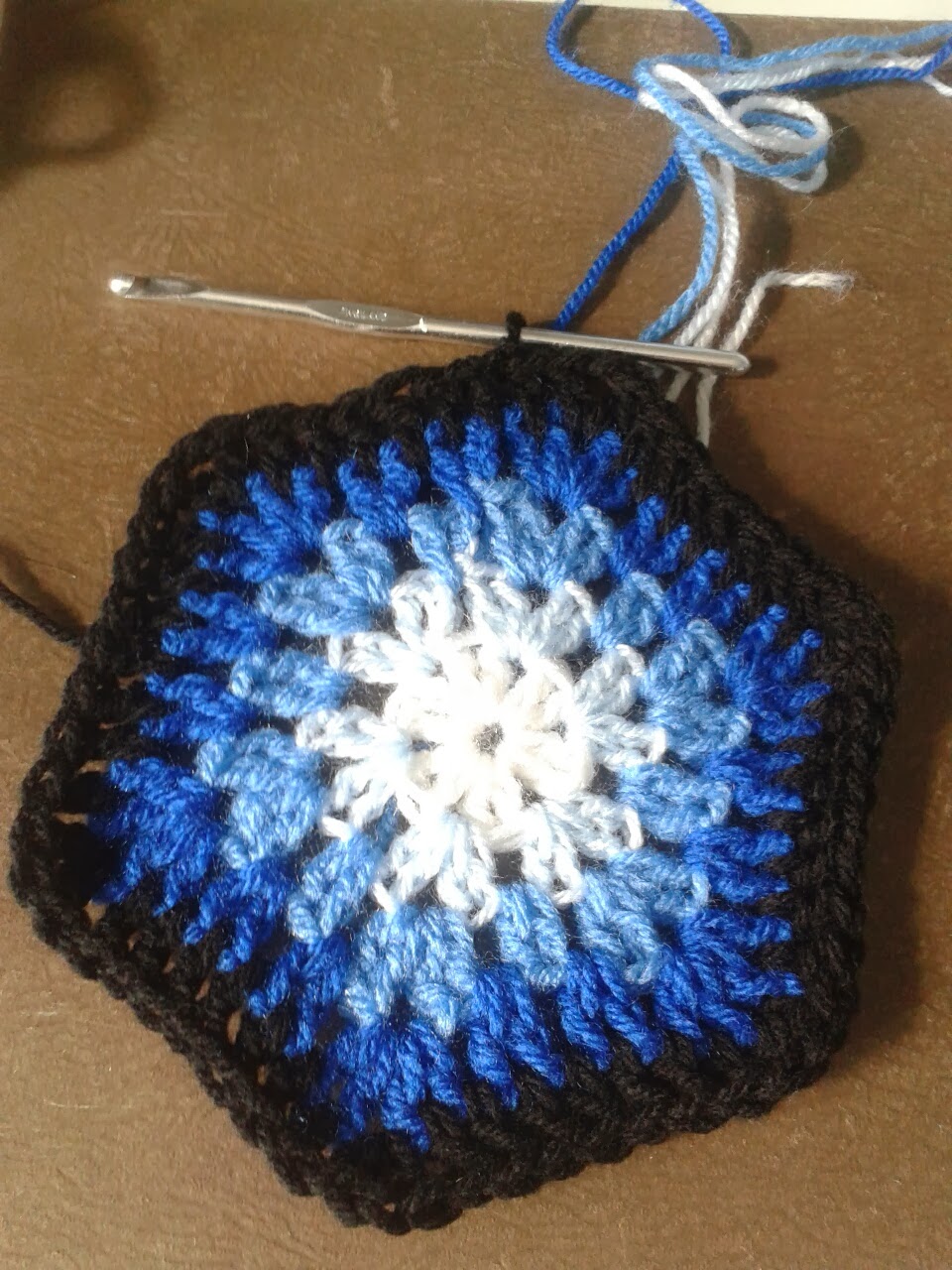I first came across 'constructional' knitting in a magazine a couple of years ago; learning to make and join 'mitred' squares opened up a whole new world for me and I was quickly addicted! One of the chief bonuses is there are NO seams to sew up! :-)
I've included some of my square blankets in previous posts (
here and
there for example ) but when I was asked by some members of our embryonic church crafting group to explain the technique I decided I needed to do something easy for people to follow! One of the activities we take part in is making blankets for charities worldwide; some of our more 'senior' knitters can only manage to knit the individual squares - these are then sewn up by those of us with more nimble fingers, as we'd like EVERYONE to be able to take part even if they're not able to cope with the growing weight of a blanket. Meanwhile, to save sewing-up, the more 'adventurous' amongst us asked me how to do the construction method.
So, without wishing to teach any of you experienced knitters out there how to 'suck eggs' (and I know there are other examples out there on the 'web) - here's my first attempt at a tutorial!
-oOo-
How
to knit a mitred square
Mitred
squares require an odd number of stitches. For the pictures in this example I used 33 stitches.
(Edited 19/11/14). I've been asked about altering the sizes - the basic rule of thumb is: always cast on an odd number of stitches and always decrease over the central 3 stitches. Using DK yarn, 4mm needles and casting on 55 stitches will yield a 6" square, approx., following the instructions below but using the stitch counts in brackets.
Cast on 33 (55) stitches.
1st row. K to last st; P1
2nd row. Sl 1, K to last st; P1
3rd row. Sl 1, K to middle 3 sts; (sl 1,
K2tog, PSSO); K to last st; P1
4th row. Sl 1, K to last st; P1
Repeat 3rd and 4th rows until
3 sts remain; after final 4th row K remaining 3 sts tog.
Now you have completed the first square. Well done!
Draw yarn through loop and cut end.
To start the 2nd square, pick up and knit
17 (28) sts down one side of 1st square:
Then continue and cast on 16 (27) more sts. You should
now have 33 (55) sts on needle:
Next row: K to last st.; P1
Now continue to rep 3rd and 4th
rows as on previous square until completed:
Continue
to add squares until desired width is achieved. You will see that the mid-row
decreases create a diagonal ‘line’.
Now to create a new row of squares on top!
Cast on 16 (27) sts, then pick up 17 (28) sts along edge of
block, like this:
Again, you’ll have 33(55) sts on needle.
Next row: K to last st.; P1
Continue 3rd and 4th row
repeats as before and complete the square:
So, 1st square was Blue; 2nd square was Pink; 3rd
square was Green. To make the 4th square, this time you’ll be
picking ALL your stitches like this:
From the top left hand side of the green square,
pick up 16 (27) sts; pick up 1 st at the corner of the blue square:
then continue to pick up a further 16 (27) sts along the
adjacent side of the pink square.
You should now have 33 (55) sts on needle. K to last st;
P1. Continue as before, repeating the original 3rd and 4th
row:
If you continue in this manner, always adding
squares right to left, you will see that the diagonal ‘lines’ run all in the
same direction.
If you want to create a diagonal zig-zag with each
new row of squares you just need to alter the direction you add the squares:
This time you’ll be placing your squares left to
right. See pic. above.
Start picking up stitches from the right hand side of
the square below (purple) and pick up 17 (28) sts, then cast on a further 16 (27). Now
you have your 33 (55) sts in total, carry on and complete the square.
Repeat the process to add a new square:
Start from
the top right of the green square and pick up 17 (28) sts. Note: the 17th (28th) stitch will be picked up from the corner of the square below (purple, in this
case), then continue to pick up a further 16 (27), making 33 (55) sts. in total.
Can you see the change of diagonal direction? Just
alternate between these two methods for each row of squares and you’ll see the
zigzag appear!
-oOo-
There - I hope this explains the technique easily! Picking up and knitting stitches for each new square saves the laborious procedure of sewing the squares together - and if you turn your work over you'll see it also gives a nice smooth finish!
The only dilemma with creating blankets in this way is - which colour shall I use next.....! ;-)























